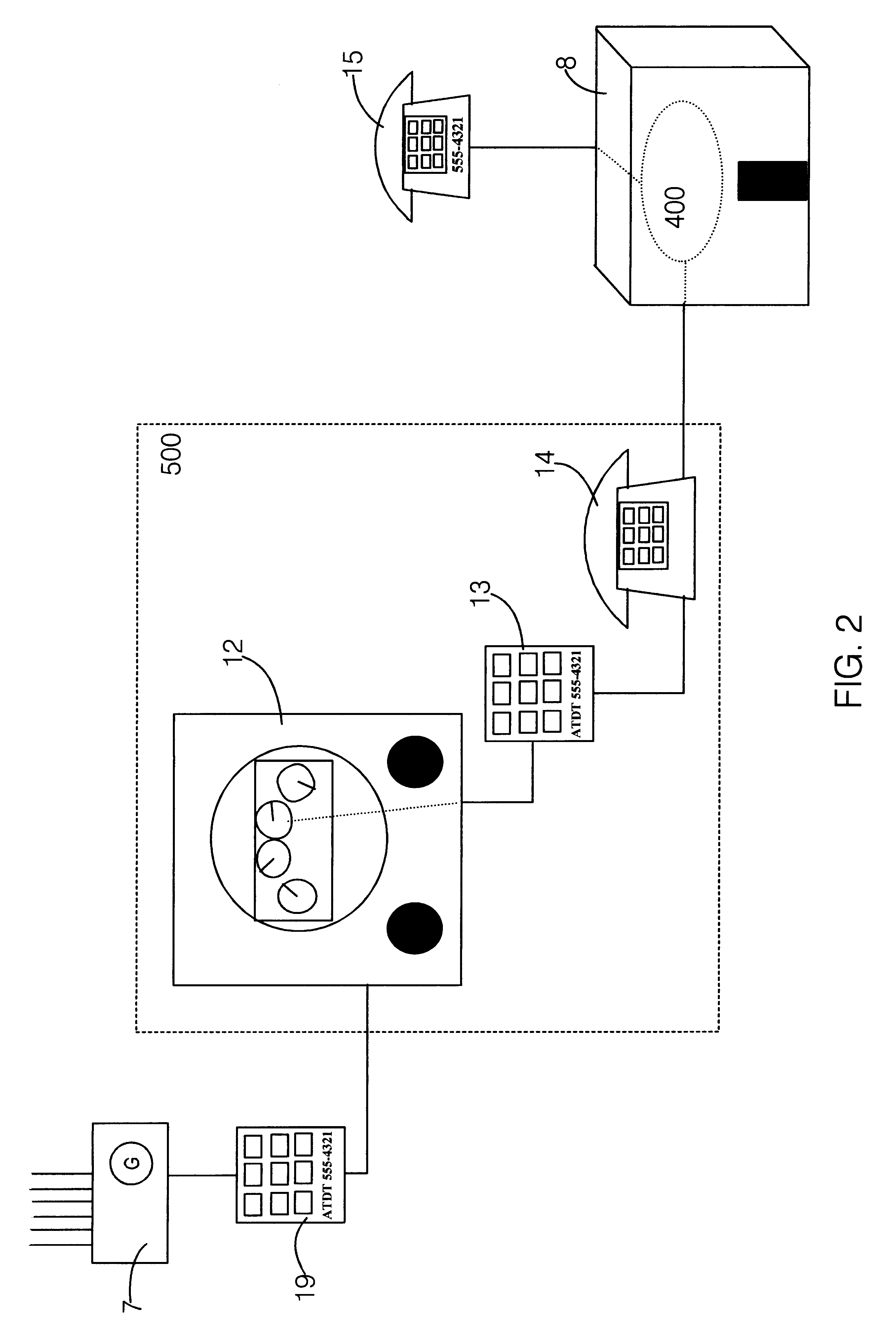Telephone-linked commodity-billing method
a commodity billing and telephone link technology, applied in the field of automatic remote billing, can solve the problems of burdensome and expensive maintenance, less convenient consumption of category ii commodities for users, and archaically cumbersome consumption
- Summary
- Abstract
- Description
- Claims
- Application Information
AI Technical Summary
Benefits of technology
Problems solved by technology
Method used
Image
Examples
Embodiment Construction
The Preferred Embodiment of the present invention is a method directed at billing for electric energy consumption by means of the telephone company local to the residence of the consumer. As will be seen, the method described will work equally well with any of the other traditional metered utilities.
As is shown in FIG. 1, the Preferred Embodiment of the present invention uses an array of meters 100 to monitor the use of electric energy at the various sites throughout the commodity distribution system 200 where the electricity is actually used. The array of meters 100 includes a plurality of meters 12A . . . 12D for metering the consumption of electricity by various commodity users 500A . . . 500D. Each respective one of the meters 12A . . . 12D is connected with a corresponding coupling device 13A . . . 13D. Each one of the coupling devices 13A . . . 13D is, in turn, connected with a respective telephone line 14A . . . 14D of the particular user 500A . . . 500D. Assuming that all of...
PUM
 Login to View More
Login to View More Abstract
Description
Claims
Application Information
 Login to View More
Login to View More - R&D
- Intellectual Property
- Life Sciences
- Materials
- Tech Scout
- Unparalleled Data Quality
- Higher Quality Content
- 60% Fewer Hallucinations
Browse by: Latest US Patents, China's latest patents, Technical Efficacy Thesaurus, Application Domain, Technology Topic, Popular Technical Reports.
© 2025 PatSnap. All rights reserved.Legal|Privacy policy|Modern Slavery Act Transparency Statement|Sitemap|About US| Contact US: help@patsnap.com



